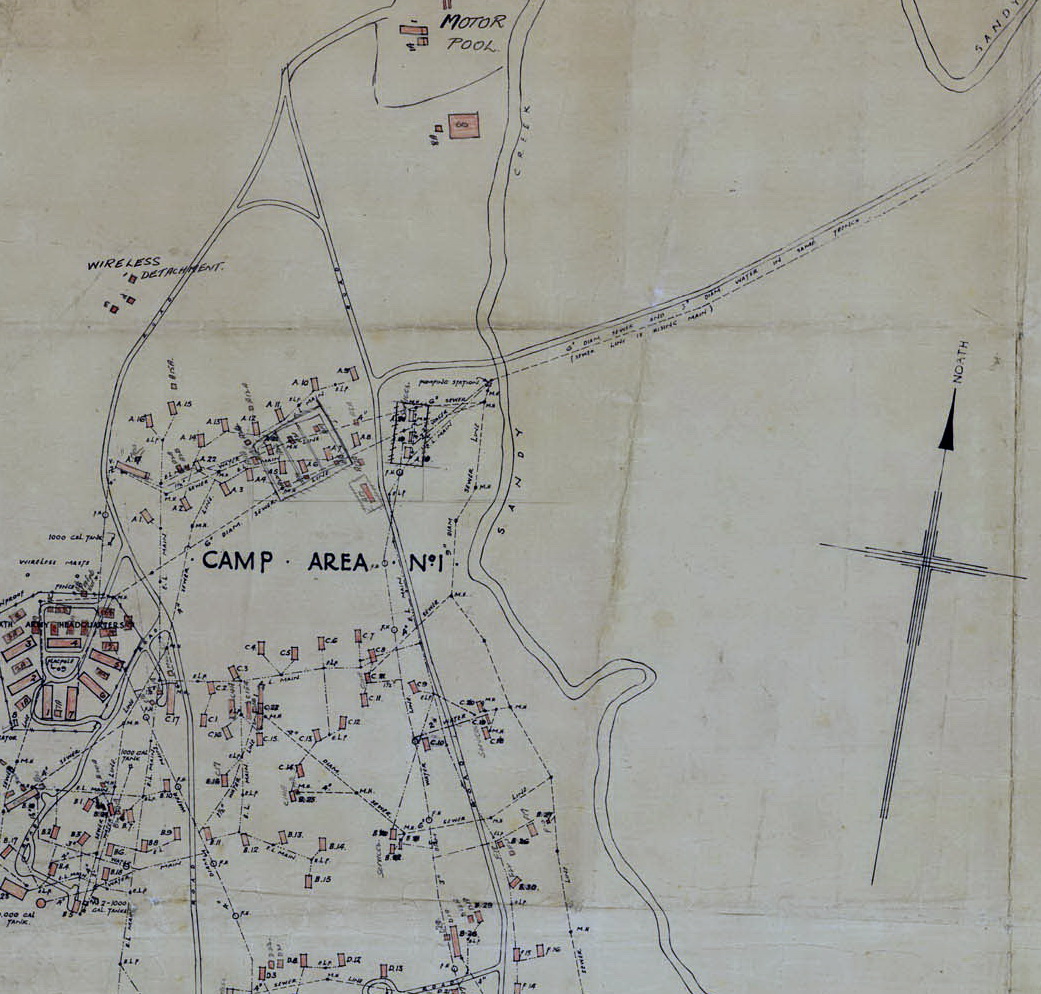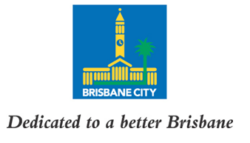In the Wacol area of the catchments
With the intervention of the United States (US) defence forces and the establishment of US General Macarthur’s command in Brisbane, military camps were established in various parts of greater Brisbane and South-East Queensland as part of the Pacific Theatre war effort. Camp Columbia, the major base developed by the US Army to house both US and Australian troops, occupied land in Wacol on both sides of Ipswich Road during the period of the war.
Extract of US Army plan for Camp Columbia adjacent to Sandy Creek at today’s Pooh Corner
At the end of the war, the land occupied by Camp Columbia reverted to other uses, which included:
- The former Moreton Prison, west of Wacol Station Road.
- The former Sanananda Barracks on the south side of Ipswich Road, which remained an Australian army camp until the early 2000s.
Facilities on the north side of Ipswich Road became an immigration facility in 1949, when the site was acquired by the Department of Immigration and the buildings used to house migrants from Europe. The camp was then known as the Wacol East Dependant Holding Camp for Displaced Persons.
Although not occupied for Camp Columbia, Pooh Corner did house a sewage treatment facility for the camp. Located near Wolston Road, the remains are still visible today.
Subsequently, Pooh Corner was occupied in the early 1950s as a hand grenade training area for National Servicemen based at the nearby Sanananda Barracks. They reportedly used to march to Pooh Corner via the Sandy Creek bridges at Ipswich Road and the railway line.
Institutional uses of land in the Wacol area continued and expanded with the advent of multiple correctional facilities, additional health facilities, and more recently, agricultural research facilities.


